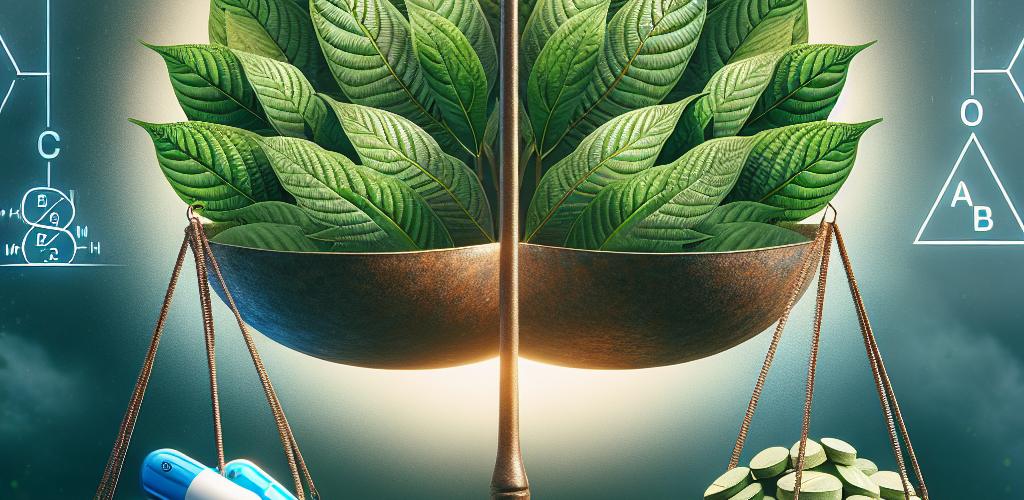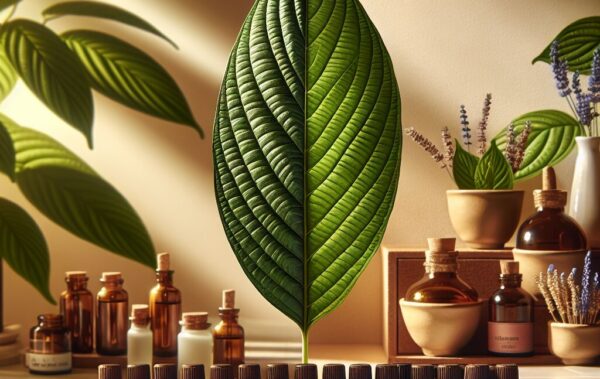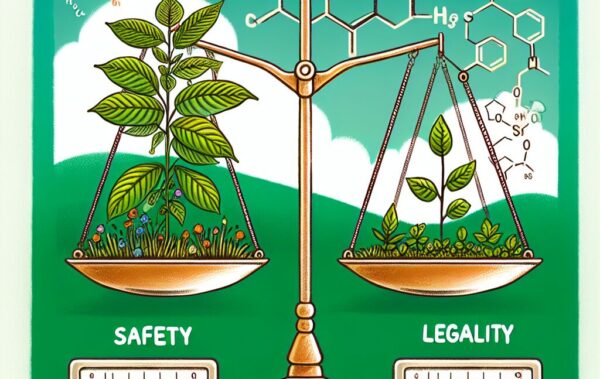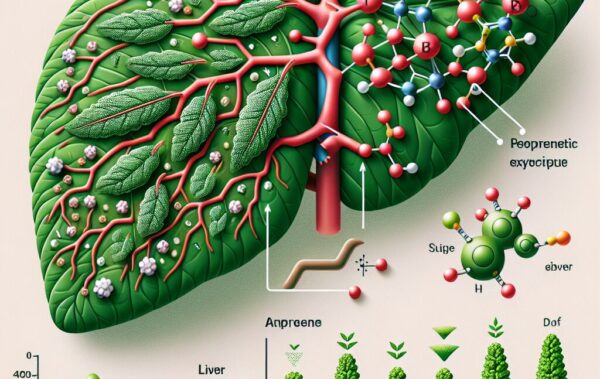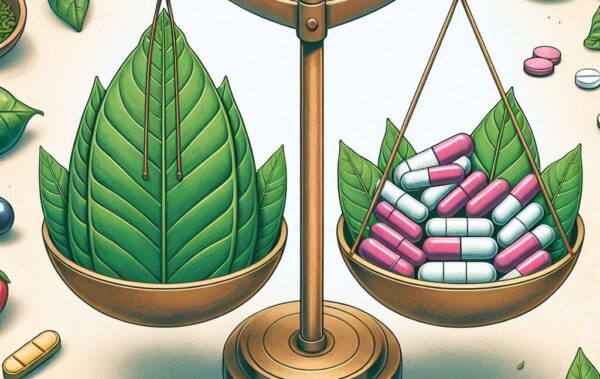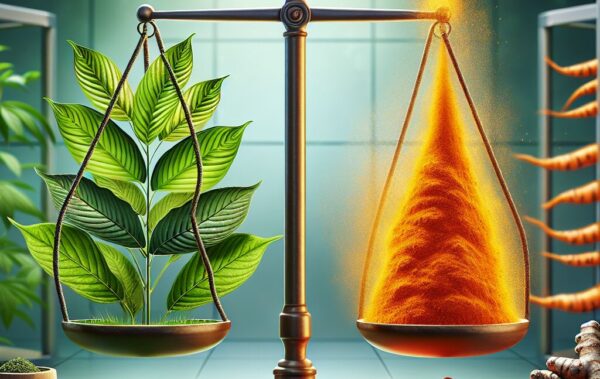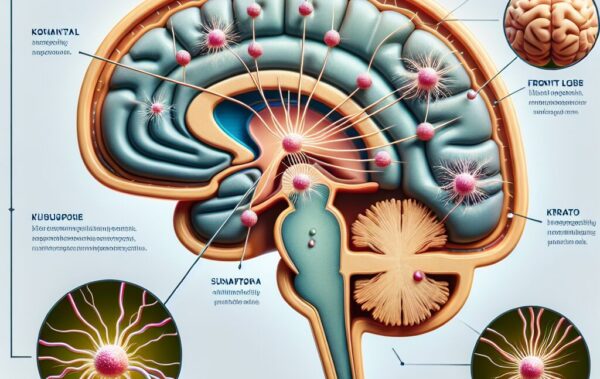- Understanding Kratom and its Effects on Mood
- Comparing Kratom and Antidepressants Mechanisms of Action
- Efficacy of Kratom versus Antidepressants in Mood Enhancement
- Risks and Side Effects: Kratom vs. Antidepressants
- Frequently Asked Questions (F.A.Q.) about Kratom and Antidepressants
Kratom, a herbal substance derived from the leaves of the Mitragyna speciosa tree, has been used for centuries in Southeast Asia for its mood-enhancing and energizing properties. In recent times, this plant has gained attention as a natural alternative for mood regulation and relief from various forms of distress. Users often describe the effects of Kratom as uplifting, providing a sense of well-being and focus, which can contribute to an overall improved mood.
The influence of Kratom on mood is thought to be linked to its interaction with opioid receptors in the brain; however, Kratom’s alkaloids have a more complex and varied mechanism of action compared to classical opioids. This interaction does not produce the typically strong and potentially dangerous euphoria that opioids are known for but rather a more subtle and manageable boosting of the user’s mood. This is why some people are turning to Kratom as a potential natural antidepressant.
At its core, Kratom’s mood-enhancing effects can be attributed to several active compounds, the most prominent being mitragynine and 7-hydroxymitragynine. These alkaloids collaborate to produce an effect that can elevate one’s sense of emotional well-being. Kratom is available in multiple forms, including but not limited to powders, capsules, and edibles, allowing users to choose the method that best fits their lifestyle and preferences.
For individuals exploring herbal solutions for mood enhancement, Kratom offers a variety of strains, each with its nuances. Some strains, like the often robust and energizing Maeng Da, may provide a noticeable boost in vitality and focus, which are factors closely related to mood. In contrast, strains like Bali or Indo are known for their soothing properties, which may help alleviate feelings of anxiety, contributing to a calmer and more stable emotional state.
- The balance between stimulant and sedative effects can often depend on the dosage taken.
- Lower doses of Kratom tend to produce more stimulating effects, which could be beneficial for those facing depressive moods.
- At higher doses, the sedative qualities of Kratom become more pronounced, potentially aiding in conditions where anxiety is a significant concern.
It is essential for individuals interested in Kratom as a mood-enhancer to understand that its effectiveness can be influenced by various factors, including individual biochemistry, the strain and quality of Kratom used, and concurrent lifestyle choices. Those new to Kratom may consider starting with a low dosage and steadily increasing it to find the optimal balance for their specific requirements.
In conclusion, Kratom presents itself as a versatile botanical with the potential to enhance mood through its interaction with the body’s natural processes. With this escalating interest in Kratom as a mood enhancer and potential natural antidepressant, further research and anecdotal evidence could pave the way for a deeper understanding of its benefits and optimal uses within the realm of mental well-being.
Comparing Kratom and Antidepressants Mechanisms of Action
Kratom’s interaction with the brain’s opioid receptors is just one piece of its complex puzzle. Unlike many traditional antidepressants, which often selectively target neurotransmitters like serotonin or norepinephrine to stabilize mood, Kratom’s effects are attributed to a synergistic interaction among multiple alkaloids within the plant. This multifaceted action could explain its distinct subjective experience, which many individuals find preferable for mood enhancement.
The primary alkaloid, mitragynine, is known to have partial agonist activity at the mu-opioid receptors, which could produce feelings of pleasure and contentment. However, it does not recruit beta-arrestin proteins, which are responsible for the respiratory depression typically associated with opioids – a critical difference when considering the safety profile of Kratom compared to classical opioids. The subtlety of Kratom’s mood-enhancing properties has made it an appealing option for those seeking alternative, natural antidepressants without the heavy sedation or risk of severe side effects that come with conventional opioid use.
Moreover, Kratom interacts with other receptor systems as well, such as adrenergic, dopaminergic, and serotonergic receptors, all of which can influence mood and well-being. This broad spectrum of action allows for a more holistic approach to mood enhancement. For example, the dopaminergic system is well-known for its role in reward and motivation, factors that are often diminished in depressive states.
Antidepressants, on the other hand, generally have more targeted mechanisms of action. Selective Serotonin Reuptake Inhibitors (SSRIs), for instance, block the reabsorption (reuptake) of serotonin into neurons, making more serotonin available to improve transmission of messages between neurons. Other classes of antidepressants may impact norepinephrine and dopamine levels. These medications are typically prescribed following a diagnosis of depression or anxiety and aim for a more regulated chemical intervention to treat specific symptoms.
While both Kratom and antidepressants can influence mood, their methods of achieving this are inherently different:
- Kratom’s multi-receptor interaction offers a diverse but subtle modulation of mood and energy.
- Antidepressants typically focus on altering the balance of certain neurotransmitters to stabilize mood.
- The onset of action may differ, with some antidepressants requiring weeks to show benefits, whereas Kratom’s effects can often be felt soon after consumption.
For those considering herbal solutions like Kratom, understanding these differences is crucial for making informed decisions about their mental health regimen. With a multitude of strains available, individuals can explore different types of Kratom to suit their needs for mood enhancement. For instance, Red Vein Kratom capsules might be a go-to for their potential calming effects, while other users might prefer the energizing touch of a White Vein Kratom powder.
In considering the use of Kratom or antidepressants, it is essential to research the potential for dependency, withdrawal, and interaction with other substances. With that said, individuals seeking mood enhancement should approach these options with caution and ideally under the guidance of a health care professional.
When integrating Kratom into one’s lifestyle for mood enhancement, personal experimentation and discretion are key, as is purchasing from reputable sources to ensure the quality and safety of the product. For quality Kratom products, one might browse through options like kratom extracts, available in various forms such as liquid extracts or powder, each providing a different intensity and duration of effects.
Ultimately, whether choosing Kratom or conventional antidepressants for mood support, it is essential for users to thoroughly understand the mechanisms of action and the potential risks and benefits involved. By doing so, they can better manage their mental health with an approach that is best aligned with their personal health goals and preferences.
Efficacy of Kratom versus Antidepressants in Mood Enhancement
When examining the efficacy of Kratom versus antidepressants for mood enhancement, one must consider the nuances of individual response to treatments. Among those seeking natural antidepressants, many have reported positive experiences with Kratom, highlighting its potential for elevating mood and relieving symptoms of depression and anxiety. Nevertheless, the empirical studies and clinical trials that would firmly establish Kratom’s efficacy are still in preliminary stages compared to the vast body of research supporting the use of conventional antidepressants.
One compelling aspect of Kratom’s appeal is the immediacy of its mood-enhancing effects. Unlike many antidepressants which may take weeks to reach their full therapeutic potential, Kratom users often experience a swift alteration in mood, energy, and focus shortly after consumption. This feature can be particularly attractive for individuals searching for timely relief from mood disturbances. For instance, users might select Maeng Da Kratom powder for its strong energizing and uplifting properties, aiming to counteract lethargy and disinterest that often accompany depressive episodes.
To provide a structured overview of the key considerations and reported benefits regarding the efficacy of Kratom for mood enhancement, the following points may be useful:
- Swift onset of mood-enhancing effects, as users report almost immediate feelings of contentment and vitality.
- Diverse profile of active alkaloids offering a wide range of experiences, from stimulation to sedation, depending on the strain and dosage.
- Potential for personalized mood management by selecting from an array of Kratom varieties suited to individual needs and responses.
However, it’s crucial to address the fact that while Kratom’s efficacy in mood enhancement is supported by a growing body of anecdotal evidence, its safety and long-term effects have yet to be conclusively evaluated by clinical research. This uncertainty stands in contrast to antidepressants, which have been extensively studied and are regulated to ensure consistent dosing and to monitor adverse effects.
| Consideration | Kratom | Antidepressants |
|---|---|---|
| Onset of Mood-Enhancing Effects | Often rapid | May take several weeks |
| Regulatory Approval | Largely unregulated | FDA approved with clear indications |
| Research and Evidence Base | Limited clinical studies | Extensive clinical trials and research |
| Personalization | Highly variable effects based on strain and dosage | More predictable, dosage and medication tailored to specific conditions |
| Risk of Dependency and Withdrawal | Potentially less understood | Well-documented and considered in treatment plan |
To fully comprehend the potential mood-enhancing benefits of Kratom, it is vital to investigate both anecdotal accounts and scientific studies with a critical lens. Individuals who seek herbal solutions for mood disorders, or those dissatisfied with the outcomes of traditional antidepressants, may consider Kratom as an adjunct or alternative treatment. However, they should do so with awareness of the need for more rigorous scientific validation of its efficacy and safety.
As we continue to explore the comparative efficacy of Kratom and antidepressants for mood enhancement, it’s important to remember that every individual’s experience with mood disorders and treatments is unique. While some may find relief in the natural properties of Kratom, others may achieve better results with clinically-proven antidepressants. As with all substances affecting mental health, users should engage in informed decision-making, ideally in consultation with healthcare professionals, to ensure the best outcomes for their personal health and well-being.
Risks and Side Effects: Kratom vs. Antidepressants
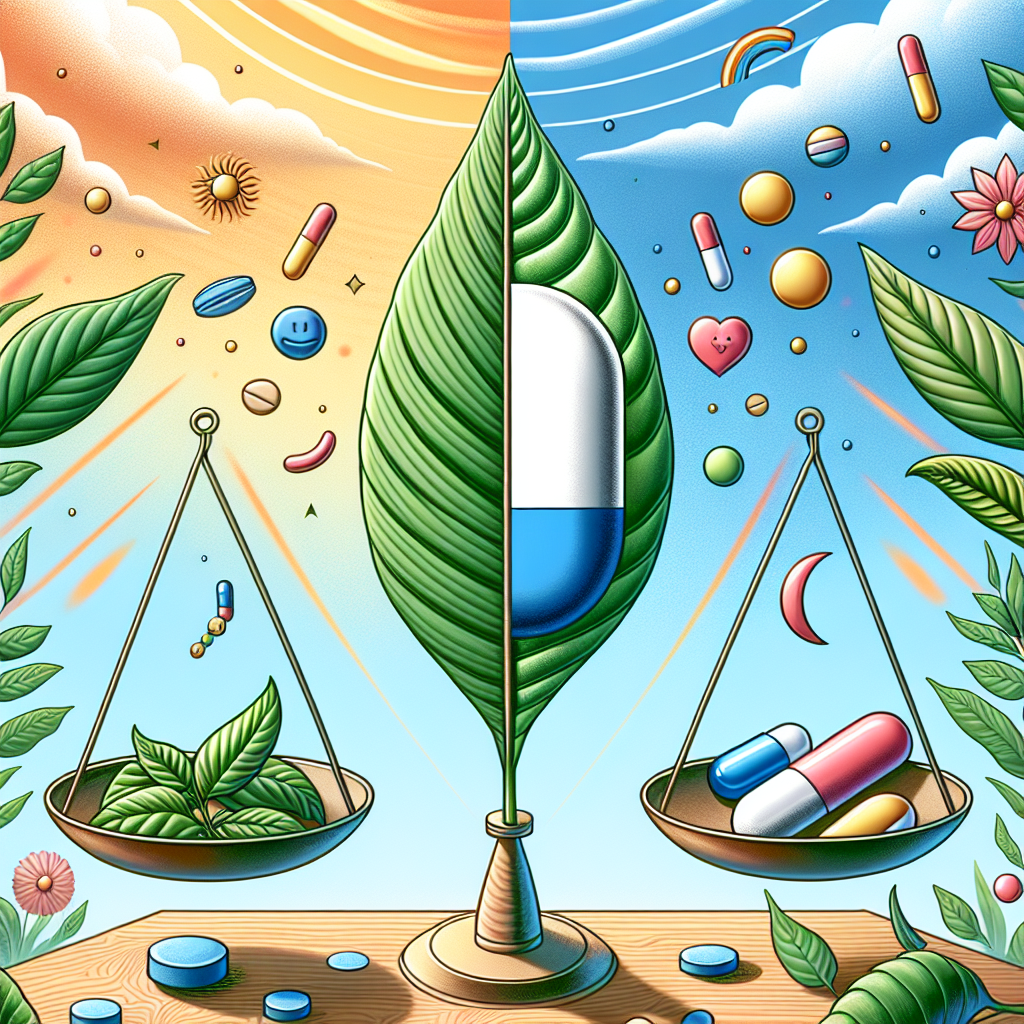 When discussing the risks and side effects associated with Kratom and antidepressants for mood enhancement, it’s crucial to have a clear understanding that both paths come with their distinctive profiles. While some opt for the herbal solutions offered by Kratom, others lean towards medically prescribed antidepressants. Each path holds potential risks and side effects that warrant consideration.
When discussing the risks and side effects associated with Kratom and antidepressants for mood enhancement, it’s crucial to have a clear understanding that both paths come with their distinctive profiles. While some opt for the herbal solutions offered by Kratom, others lean towards medically prescribed antidepressants. Each path holds potential risks and side effects that warrant consideration.
Starting with Kratom, it’s important to note that despite Kratom’s growing popularity as a natural antidepressant, its side effects are not thoroughly understood due to the lack of extensive clinical research. Some users have reported side effects such as nausea, constipation, sleep issues, and a dry mouth. More concerning, however, are the anecdotal reports which suggest the possibility of dependency or Kratom use disorder, particularly with prolonged and frequent use. Given that Kratom interacts with opioid receptors, there is also the potential for withdrawal symptoms similar to those experienced with opioid cessation.
Another consideration is the regulatory status of Kratom. As a largely unregulated substance, there is significant variability in the quality and purity of Kratom available on the market, which can lead to inconsistent effects and potentially hazardous situations if the product is adulterated. Purchasing Kratom from reputable sources, such as dedicated Kratom shops, can mitigate some of these risks by ensuring a higher standard of product quality.
Turning to antidepressants, these medications are not without their own risks and side effects. SSRIs, one of the most commonly prescribed classes of antidepressants, can cause a range of side effects, including but not limited to sexual dysfunction, weight gain, insomnia, and sometimes an increase in anxiety or jitteriness, particularly at the start of treatment. More serious but less common side effects include an increased risk of bleeding, particularly when taken with certain pain medications, and serotonin syndrome, a potentially life-threatening condition caused by too much serotonin in the brain.
In addition to these side effects, antidepressants are associated with a documented risk of dependency and withdrawal effects, emphasizing the importance of careful management by healthcare professionals. Moreover, they are not suitable for everyone, and their efficacy can vary significantly from person to person.
Given these considerations, individuals seeking mood enhancement must evaluate the risks and side effects of both Kratom and antidepressants:
- Kratom may offer more immediate effects but comes with uncertainties regarding its safety profile and the risk of dependency.
- Antidepressants are regulated, and their side effects and interactions with other medications are well-documented, requiring ongoing medical oversight.
- Both Kratom and antidepressants can interact with other substances and exacerbate pre-existing health conditions.
Ultimately, whether an individual chooses Kratom or antidepressants for mood enhancement, it is of paramount importance that they do so with full knowledge of the associated risks and under the supervision of a healthcare provider. The decision should be made considering not only the potential mood-boosting benefits but also the safety and well-being of the individual in the long term. Those considering Kratom as a natural alternative should opt for high-quality products, such as Maeng Da Kratom powder or other varieties found in specialized markets, and approach its use with the same caution and awareness as they would with any mood-altering substance.
While both Kratom and antidepressants offer pathways to mood enhancement, it’s the complex balance between treating symptoms effectively and managing potential side effects that forms the cornerstone of any treatment decision. The journey to improved mental health is highly personal, and what works for one individual may not be the best for another. It is a multifaceted decision that goes beyond symptom management to encompass lifestyle, personal beliefs, and overall health objectives.
Frequently Asked Questions (F.A.Q.) about Kratom and Antidepressants
In this section, we’ll respond to some of the most frequently asked questions about Kratom and antidepressants to help clarify their roles in mood enhancement.
What are the legal considerations when using Kratom for mood enhancement?
Kratom’s legality varies globally and within the United States. While it is legal in many regions, some countries, states, and cities have imposed restrictions or bans. Always check local laws and regulations before purchasing or using Kratom for mood enhancement or any other purpose.
Can Kratom be used in conjunction with traditional antidepressants?
Combining Kratom with other medications, including antidepressants, can be dangerous and is generally not recommended. Always consult a healthcare provider before mixing Kratom with any medications, as interactions can result in serious side effects.
How do I choose the right Kratom strain for mood enhancement?
Choosing the right Kratom strain involves understanding the variances in effects provided by different strains. Red vein strains, like Red Vein Kratom capsules, are popular for their calming effects, while white and green strains offer more energizing effects. Starting with smaller doses can help you gauge how a particular strain affects your mood.
Are there any natural antidepressants that can be used as alternatives to Kratom?
Yes, there are several natural antidepressants and herbal solutions for mood enhancement that individuals may consider as alternatives to Kratom, such as St. John’s Wort, SAMe, Omega-3 fatty acids, and adaptogenic herbs like ashwagandha and rhodiola. It is imperative to consult with a healthcare provider before starting any natural supplements.
How do the side effects of Kratom compare to those of prescription antidepressants?
Side effects of Kratom can include nausea, constipation, and potential dependency, while antidepressants commonly have side effects such as sexual dysfunction, weight gain, and insomnia. Both have the potential for more severe side effects, and individual experiences can vary widely. Proper guidance from healthcare professionals is crucial in managing side effects.
Do remember, these responses are intended as a general guide and should not replace professional medical advice. Always consult with a healthcare professional before starting, stopping, or combining treatments for mood enhancement. Whether considering Kratom, traditional antidepressants, or other herbal solutions, it is vital to make informed choices about your mental health.

